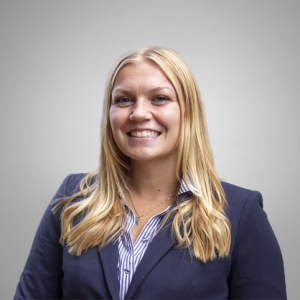Community Health Needs Assessments (CHNAs) have been growing in popularity and utility since their creation in March 2012. The Affordable Care Act (ACA) established the need for required documentation of “Community Benefit” for all not-for-profit hospitals. The CHNA fulfills this requirement and starting in 2013, is required to be updated every three years based on the IRS guidelines, making 2022 an “on-cycle” year for CHNAs.
While being a requirement for not-for-profit hospitals, for-profit hospitals and health systems have also begun to see the benefits of conducting a CHNA. Some of these benefits include:
- Identifying key service delivery gaps,
- Developing an understanding of community perception of healthcare and
- Identifying health disparities and social determinants to inform future outreach strategies.
This insight into the community and population health has become a priority for hospitals as they adapt to the shifts in the overall healthcare landscape and delivery.
Since CHNAs have been required, Octave has conducted more than 200 with independent community hospital clients across the country. Octave has continually refined and enhanced its CHNA process to be responsive to clients and better understand the new and emerging health and social needs of the communities they serve. Octave has already worked with more than 21 healthcare organizations this year to complete CHNAs and will be even busier for the remainder of 2022.
Continually Strengthening the CHNA Process
The Internal Revenue Service (IRS) requires that a group of local stakeholders and health experts provide input on community health needs. Octave’s members work diligently to maximize responses and represent the community’s interests, and needs, as fully as possible.
To meet this goal, the team assists clients in implementing a variety of marketing strategies to reach a broad range of community members, including:
- Digital platforms such as posts on social media,
- Blogs on hospital websites,
- Advertisements on local radio stations and
- Merging traditional solicitation strategies like newspaper ads, postcard mailers and waiting room flyers, with newly accepted digital communications like QR codes.
In addition to constantly seeking greater participation and increasing community voices with each and every CHNA, the team is always looking for ways to make the survey more accessible to a diverse range of community members. Examples include:
- Adding visualizations of data,
- Adjusting the survey language to exclude healthcare jargon, reading at a seventh-grade level, and
- Creating versions in multiple languages.
These strategies have allowed us to reach populations in our client communities that would otherwise not be fully represented. In fact, so far in 2022 Octave-led CHNAs have received on average nearly 400 survey responses per independent community hospital client!
A key goal in Octave’s CHNA process is to gain a deeper understanding of not only the health behaviors and health outcomes that are making communities unhealthy, but also the underlying social determinants of health (SDoH) that contribute to negative health outcomes and barriers to accessing healthcare. The survey has been enhanced to include a section for respondents to rank the importance of addressing different factors in their community like affordable housing, access to childcare and employment.
While these may not be traditional health factors, they are social factors that affect a range of health outcomes and one’s ability to access healthcare. This information is useful for organizations as they work to better understand their patient population, improve health outcomes and reduce disparities in care.
Octave’s experts seek the ultimate goal of designing a CHNA report that does more than just meet IRS requirements. We seek for our output to provide a useful tool for our clients and the communities they serve. This is done by:
- Limiting the use of technical IRS language,
- Including the most relevant data and
- Incorporating easy-to-understand graphs and images to make data elements more inclusive to a range of health literacy levels.
Our report includes an executive summary that covers the key takeaways from the CHNA so that hospital leaders, board members and community members can quickly reference relevant data points and findings. This allows us to tell the story of the health needs in the community in a way that is accessible to as many people as possible.
CHNAs: Always Striving for Stronger Results
The Octave regularly seeks to innovate to best serve our client hospitals, organizations and their communities. Our clients enjoy a strong CHNA response rate, which has grown with Octave’s innovations over time. This has helped us identify and focus on the true health priorities in our communities. Additionally, by gathering information on SDoH, the organizations we serve have a better understanding of the social drivers that affect their communities’ access to health/healthcare, as well as creating an opportunity to explore new grant opportunities and initiatives focused on addressing social needs.




